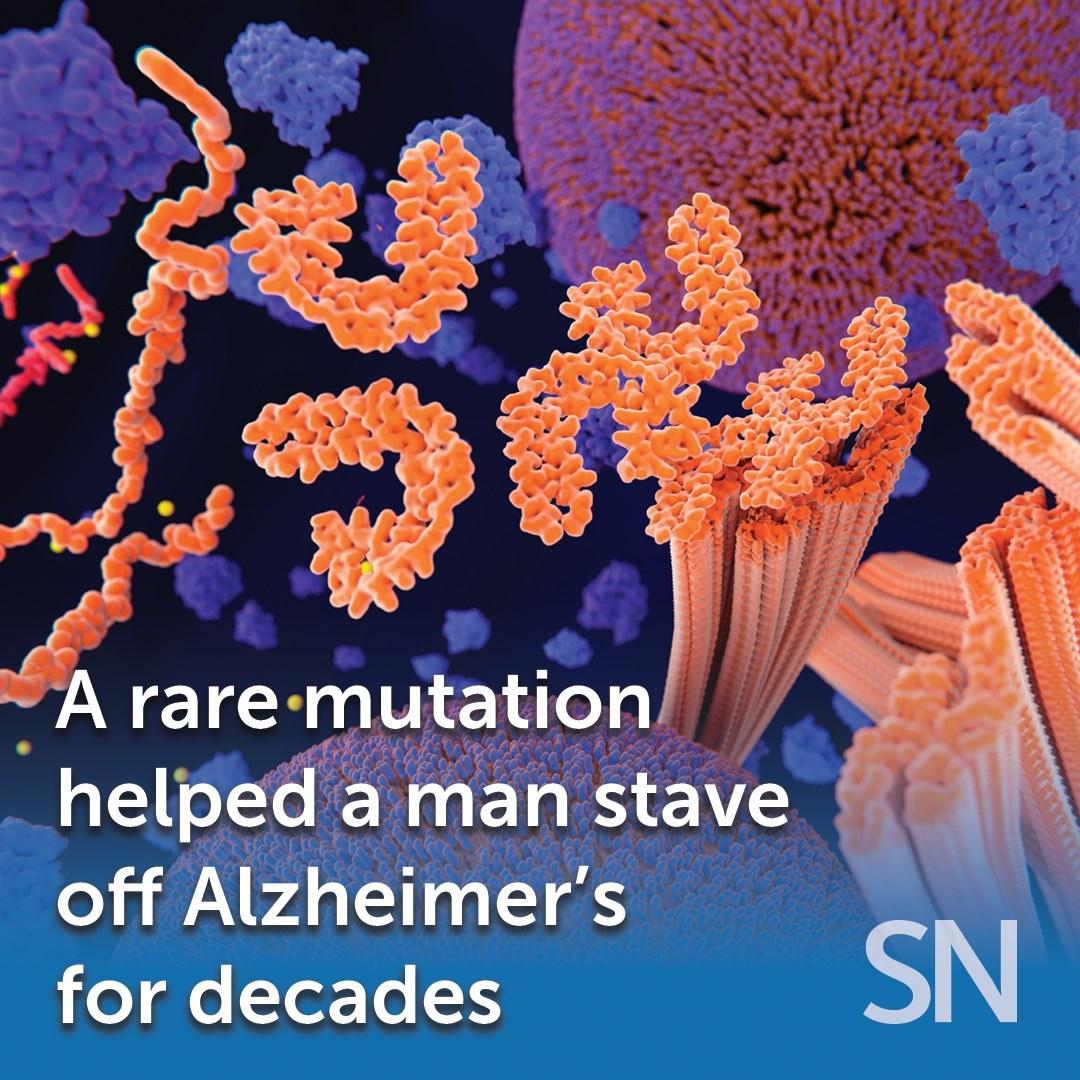A rare genetic mutation, never seen before, protected a man with an inherited form of Alzheimer’s from developing the disease for decades. He is the second person found to have such protection, following a report in 2019 of a woman with a different mutation. Both mutations may have staved off the disease for years by acting in similar ways in the brain, an insight that could lead to new treatments for all forms of Alzheimer’s, researchers report. Both the man and woman were members of a Colombian family who have a mutation in the PSEN1 gene that causes the rare inherited variety of Alzheimer’s. People with “familial” Alzheimer’s usually start showing signs in their 40s. The woman stayed sharp into her 70s, while the man described in the new study was still mentally healthy at 67. “That means they were protected, because they should have gotten the disease 30 years earlier, and they didn’t,” says neurologist Diego Sepulveda-Falla. Amyloid plaques, thought by many researchers to be deeply involved in Alzheimer’s, were abundant in both patients’ brains. But the woman had low levels of another possible culprit, clusters of proteins called tau tangles (orange clumps in this illustration). Surprisingly, the man “was severely affected by tau,” Sepulveda-Falla says. But some key regions had been spared from tau buildup.
(: Juan Gaertner/Science Photo Library/Getty Images Plus)
#science #alzheimers #neuroscience #disease #dementia #genetic #mutation
(: Juan Gaertner/Science Photo Library/Getty Images Plus)
#science #alzheimers #neuroscience #disease #dementia #genetic #mutation
A rare genetic mutation, never seen before, protected a man with an inherited form of Alzheimer’s from developing the disease for decades. He is the second person found to have such protection, following a report in 2019 of a woman with a different mutation. Both mutations may have staved off the disease for years by acting in similar ways in the brain, an insight that could lead to new treatments for all forms of Alzheimer’s, researchers report. Both the man and woman were members of a Colombian family who have a mutation in the PSEN1 gene that causes the rare inherited variety of Alzheimer’s. People with “familial” Alzheimer’s usually start showing signs in their 40s. The woman stayed sharp into her 70s, while the man described in the new study was still mentally healthy at 67. “That means they were protected, because they should have gotten the disease 30 years earlier, and they didn’t,” says neurologist Diego Sepulveda-Falla. Amyloid plaques, thought by many researchers to be deeply involved in Alzheimer’s, were abundant in both patients’ brains. But the woman had low levels of another possible culprit, clusters of proteins called tau tangles (orange clumps in this illustration). Surprisingly, the man “was severely affected by tau,” Sepulveda-Falla says. But some key regions had been spared from tau buildup.
(🎨: Juan Gaertner/Science Photo Library/Getty Images Plus)
#science #alzheimers #neuroscience #disease #dementia #genetic #mutation
·1723 Views
